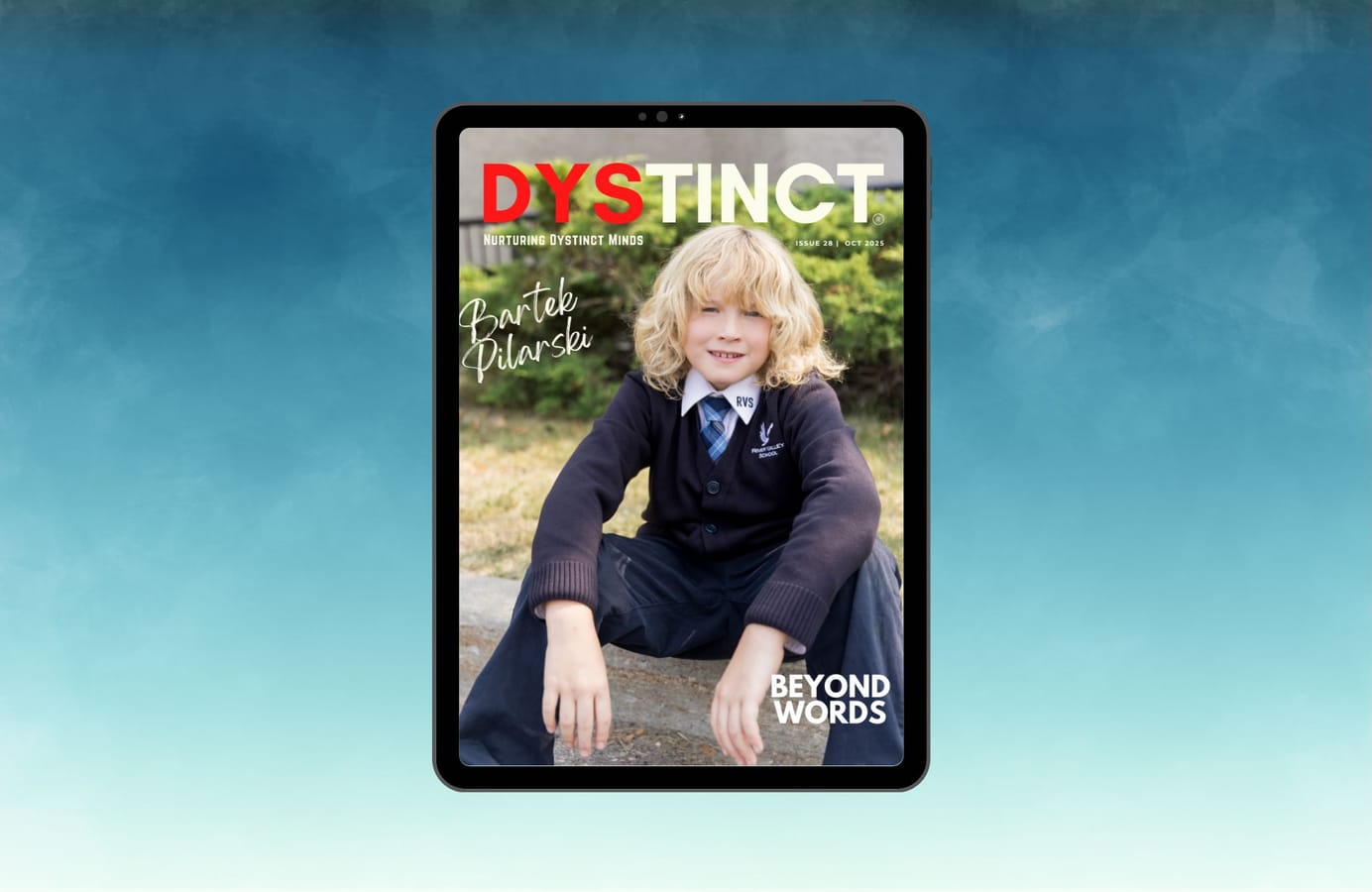
Issue 20: The power of games to help students who struggle with maths | Sarah Wedderburn
Sarah Wedderburn delves into the transformative potential of games in aiding students struggling with math, highlighting how they reinforce mathematical concepts, foster a positive learning environment, and enhance the overall learning experience for students.
Games divert attention away from the tyranny of the right answer, creating a more open field for ideas of all qualities.
In this article, we examine the role of games in specialist maths tuition and diagnostic maths assessment, looking at examples and exploring their advantages.
Number Patterns
Number Patterns
Research has shown the importance of the automatic recognition of the number patterns – the patterns on a dice.
For children with a poor sense of number, there are definite benefits from working with patterned visual number images:
- The images prevent a ‘one after another’ view of numbers.
- Each number pattern has a distinctive identity.
- The images develop a view of numbers as internally patterned constructs, wholes that can be built up, broken down and built up again.
To begin a student’s recognition of number patterns, I start working in a concrete mode using individual Lego blocks or Smarties, counting them out one by one and laying them into the pattern that we find on the dice. The student can then check with the dice to see that their pattern matches the one shown there. We can then reinforce their knowledge by playing Number Pattern Bingo.
Number Pattern Bingo
Number Pattern Bingo
Each student has a number pattern bingo board, and the winner is the first person to fill their board.
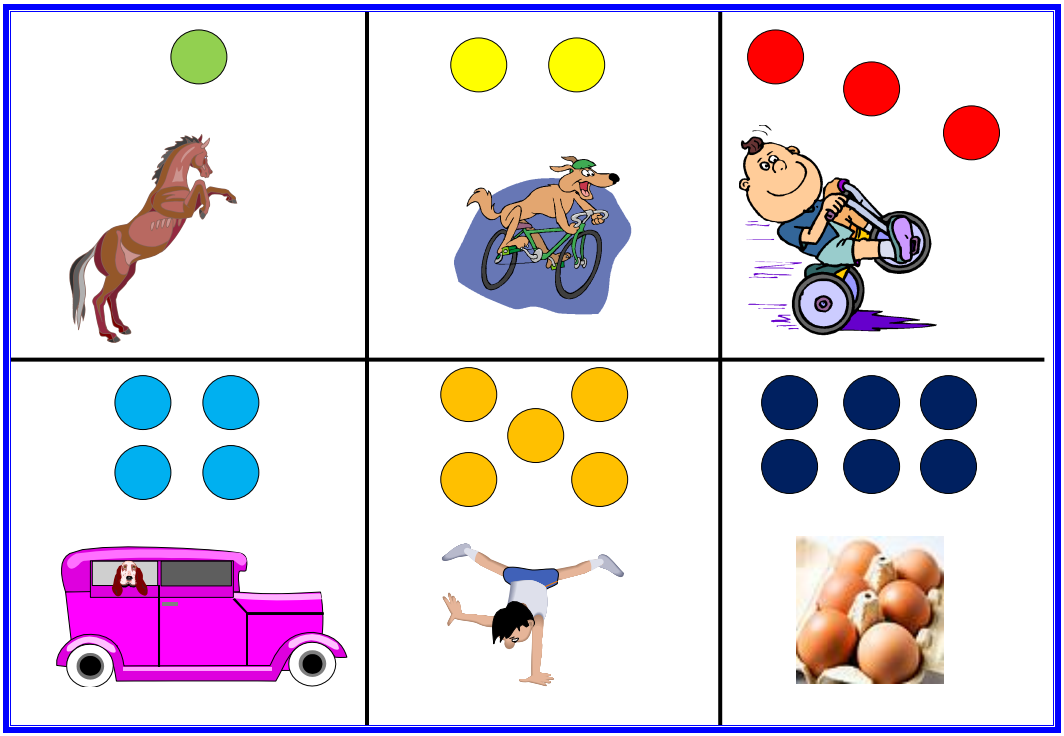
The questions are placed in a pile, and turns are taken to pick up a card. Before they answer the question on the card, I ask them:
- To read the question aloud.
- Give me an alternative word that we could use for the minus symbol.
- Will your answer be larger or smaller?
- Why?
- Do you know the answer, or how shall we work it out?
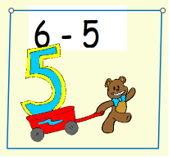
So, this game provides more learning than just the over-learning/revisiting of number pattern recognition. It also gives us the chance to develop the student’s analysis of the question, expand their vocabulary of mathematical symbols, build their confidence, ensure they can work out the answer to simple questions and, importantly, have fun. It is an example of why games are a more powerful learning tool than worksheets.
We also use the game to develop specific maths vocabulary and knowledge:
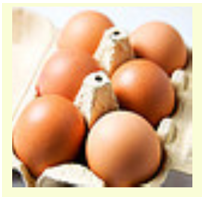
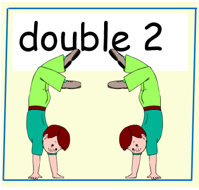
The 100 Square Game
The 100 Square Game
The 100 square is an important tool as it is a visual representation of our number system. However, it is also very abstract (moving your finger down a row does not mean that you have added on ten; it means you’ve moved your finger down a row!).
As with all concepts, we would introduce the 100 square in a concrete mode, building up the student’s knowledge from a number line. As their understanding of numbers, place value and numerical sequences expands, we find that our number lines become so long that they continually fall off the desk and onto the floor. So, we ask, how can we work with these lines on our table all at the same time? We move them around to make the numbers flow correctly but place the lines one above the other – in effect making a 100 square.
This game then encourages both physical interaction and manipulation of the 100 square.
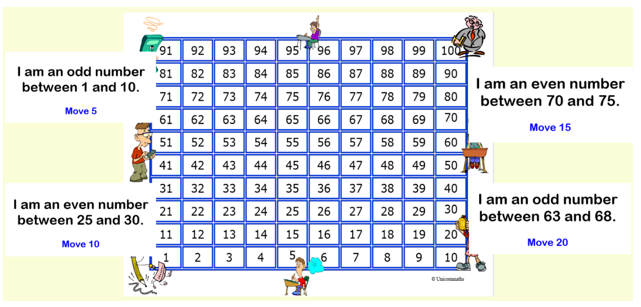
The 100 square game is played as a race to 100. As you will see, my 100 square board begins with 1 at the bottom left-hand corner, not at the top. This is because numbers get larger as they go up the board, like building a house up from its foundations. If, however, your school uses a 100 square with 1 at the top left corner, then the same game can be played with a descending number board.
The question cards are turned, and the numbers found on the board are marked, either with fingers, Lego or highlighter pens, allowing for the questions to be easily answered. This game involves concrete interaction with the 100 square as well as revision of odd and even numbers. Players move by the scores given on the cards, gaining a real understanding of how the 100 square works.
The 100 square is a resource that we introduce to young students and often stop using before students with maths difficulties have gained a real understanding that will allow them to manipulate it usefully. So, we use the same baseboard with higher concepts and vocabulary to provide our older students with a second bite at the cherry – often leading to many light-bulb moments!
This post is for paying subscribers only
SubscribeAlready have an account? Log in

